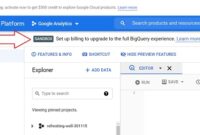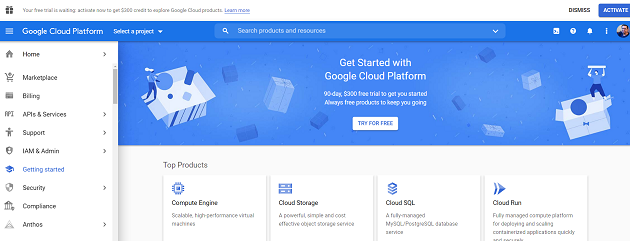BigQuery Sandbox
Exploring BigQuery Sandbox: A Playground for Data Analysis
In today’s data-driven world, businesses and organizations are constantly seeking innovative ways to extract insights from their ever-expanding datasets. Google BigQuery has emerged as a powerful tool that enables them to analyze vast amounts of data quickly and efficiently. To facilitate easier exploration and adoption, Google introduced the BigQuery Sandbox—a playground for data analysis that empowers users to dive into BigQuery’s capabilities without the complexities of managing resources. In this article, we’ll delve into what BigQuery Sandbox is, its features, benefits, and how it can be a game-changer for data enthusiasts.
Understanding BigQuery Sandbox:
Google BigQuery is a fully managed, serverless data warehouse designed for high-performance analysis of large datasets. It allows users to run SQL-like queries on massive datasets and gain insights at lightning speed. The BigQuery Sandbox takes this one step further by providing a simplified and accessible environment for users to explore BigQuery’s functionalities without the need for setting up billing, managing quotas, or worrying about resource limitations.
BigQuery Sandbox is a free tier of BigQuery that allows you to explore BigQuery features without providing a credit card or creating a billing account for your project. It offers a limited set of BigQuery features, including:
- Up to 10 GB of active storage
- Up to 1 TB of query capacity per month
- Tables, views, and partitions in partitioned tables have a default 60-day retention policy
- BI Engine capacity of up to 1 GB can be created

BigQuery Sandbox does not include the following features:
- Data streaming
- DML (Data Manipulation Language)
- Data Transfer Service
To use BigQuery Sandbox, you need to:
- Sign in to your Google Cloud account.
- In the Google Cloud console, on the project selector page, select or create a Google Cloud project.
- Optional: If you select an existing project, make sure that you enable the BigQuery API.
- Click the Activate BigQuery sandbox button.
Once you have activated BigQuery Sandbox, you can start exploring BigQuery features. You can load data into BigQuery, create tables, and run queries. You can also use the BigQuery console, the BigQuery API, or the BigQuery client libraries to interact with BigQuery.
When you are ready to upgrade from BigQuery Sandbox, you can do so by enabling billing for your project. This will give you access to the full set of BigQuery features.
Features of BigQuery Sandbox:
- No Credit Card Required: One of the most significant barriers for newcomers to cloud services is the requirement of a credit card. BigQuery Sandbox eliminates this obstacle by allowing users to explore the platform without any financial commitment.
- Limited Usage Quotas: While the Sandbox offers a simplified experience, users still have access to a considerable amount of computational resources. This ensures that users can experiment with meaningful datasets and complex queries.
- Sample Datasets: BigQuery Sandbox comes preloaded with sample datasets that allow users to practice their SQL skills and learn the ropes of data analysis. These datasets cover a range of industries and use cases, making it versatile for various learning needs.
- Real-world Simulations: The Sandbox environment aims to mimic the real BigQuery experience as closely as possible. This way, users who start with the Sandbox can seamlessly transition to the full-fledged BigQuery platform when they require more resources and capabilities.
- https://appkamods.com/best-dedicated-servers/
Benefits of BigQuery Sandbox:
- Learning Opportunity: For newcomers to data analysis and BigQuery, the Sandbox offers a risk-free environment to learn and experiment. Users can familiarize themselves with SQL querying, data manipulation, and analysis techniques without the fear of incurring unexpected costs.
- Quick Prototyping: Data professionals often need to prototype and validate their ideas before committing to a full-scale implementation. The Sandbox’s limited but sufficient resources allow for quick prototyping, enabling users to gauge the feasibility of their analysis before diving deeper.

- Cost-efficient Testing: When working on new projects or analysis, it’s common to iterate and refine queries. In the Sandbox, users can iterate without worrying about resource costs, ensuring that the final queries are optimized and efficient.
- Exploration Across Domains: The sample datasets cover a wide range of domains, from retail to healthcare, finance, and more. This allows users to explore data from various industries, expanding their analytical skills and adaptability.
Getting Started with BigQuery Sandbox:
- Accessing the Sandbox: To access the BigQuery Sandbox, users need a Google account. They can navigate to the Google Cloud Console and activate the BigQuery Sandbox.
- Exploring Sample Datasets: Once inside the Sandbox, users can start exploring the provided sample datasets. They can write SQL queries to retrieve information, perform calculations, and gain insights.
- Learning Resources: Google provides ample documentation and tutorials to help users make the most of the Sandbox. From basic SQL syntax to advanced querying techniques, users can find valuable resources to enhance their skills.
Conclusion:
Google BigQuery Sandbox is a valuable initiative that opens the doors to data analysis for users of all skill levels. By removing financial barriers and simplifying resource management, it encourages learning, experimentation, and quick prototyping. Whether you’re a budding data enthusiast or a seasoned analyst exploring a new domain, the BigQuery Sandbox offers a safe and accessible playground to harness the power of data without the worry of resource constraints. So, dive into the world of data analysis with BigQuery Sandbox and unlock a realm of insights waiting to be discovered.
